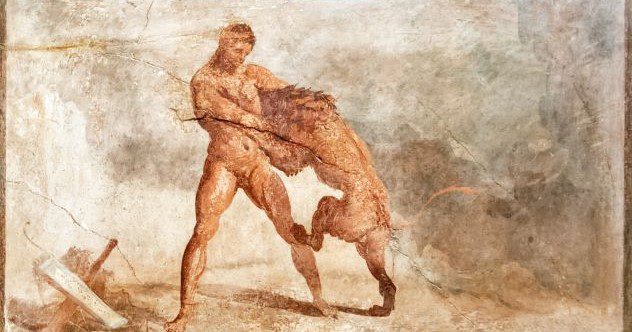A statistical tool borrowed from ecology suggests that there were originally 40,600 copies of stories about King Arthur and other western European heroes – but only 3648 survive
Humans
17 February 2022
A scene from the Romance of Lancelot of the Lake The Print Collector/Alamy
Nine in 10 medieval manuscripts telling tales of chivalry and heroism have been lost to time, according to a new estimate that uses ecological statistical models to understand the volume of literature produced.
Katarzyna Anna Kapitan and Daniel Sawyer at the University of Oxford and their colleagues from around Europe borrowed the ecological concept of the “unseen species model” to understand the volume of medieval literature in the genre of narrative fiction that once existed. These medieval texts include the famous stories of King Arthur and of Lancelot.
An unseen species model is a statistical tool that ecologists can use to estimate biological diversity after surveying an area. Chances are that the survey won’t uncover all of the species in the area, but the model can use the number of observed species and their abundances to estimate how many additional species are present.
Join us for a mind-blowing festival of ideas and experiences. New Scientist Live is going hybrid, with a live in-person event in Manchester, UK, that you can also enjoy from the comfort of your own home, from 12 to 14 March 2022. Find out more.
“These models use the pattern of the observed evidence to estimate what we’re not seeing,” says Sawyer.
In the manuscript study, the researchers looked at the number of surviving copies of each manuscript – which is a little bit like the abundance of a biological species. Their model states that once all copies are missing, the manuscript is lost – a little like a species vanishing from the study area.
They gathered records of 3648 copies of 799 works written in Dutch, French, Icelandic, Irish, English and German. The model then suggested that these copies are part of a population that originally contained 40,614 copies of 1170 works.
“It’s very valuable for our research that we’re stepping beyond the case studies that dominate our field,” says Kapitan – in other words, it is important to engage with the manuscripts that have been lost as well as those that survive.
Using the statistical data produced, the researchers were able to estimate that 62 per cent of copies of English romance and adventure tales have disappeared, compared with 19 per cent of copies of similar manuscripts in Irish, and 23 per cent in Icelandic.
Finding a way to quantify the missing literature is a “holy grail”, says Kathleen Kennedy at the University of Bristol, UK, because it fills the knowledge gaps medieval scholars have about the context of existing work. “Applying statistical models from ecology offers a tantalising workaround, and the team’s findings generally support existing scholarly assessments,” she adds.
However, Kennedy points out it is still just an estimate – even if it is one rooted in statistical rigour. “In the end, we cannot ever prove or disprove either traditional or statistical estimates of lost literary works, or the manuscripts containing them,” she says.
Journal reference: Science, DOI: 10.1126/science.abl7655
More on these topics:
Note: This article have been indexed to our site. We do not claim legitimacy, ownership or copyright of any of the content above. To see the article at original source Click Here












